I want to do a bilinear interpolation in R but I cant figure out how to do it with akima interp function because I get a matrix half fill with numbers and half with NA. This is an example of my problem:
x = rep(c(1,2,3,6,9,12)/12,5)
y = seq(2709,3820,length = 30)
z = seq(9.2,16.5,length = 30)
inter_lin = interp(x,y,z,xo = seq(min(x),max(x),length=100),
yo = seq(min(y), max(y), length=100), linear=T)
I also tried using the function interp.surface.grid form fields but z has to be a matrix with values for all x and y used which I don't have so it doesn't work.
EDIT
This is the y and z vectors I actually have:
y = c(2931.076,2901.935,2868.635,2804.006,2760.297,2709.114,2983.466,2969.436,2954.808,2928.802,2915.815,2903.867,
3043.365,3051.140,3057.960,3079.230,3103.015,3127.245,3118.090,3156.223,3194.574,3291.021,3380.687,3472.676,
3195.631,3260.866,3331.776,3502.477,3658.052,3829.511)
z = c(10.280984,9.733925, 10.176117, 10.644877, 10.950297, 11.737252, 10.442495, 10.170472, 10.590579, 11.153778 ,11.501962,
12.066833,11.000000, 11.025000, 11.450000, 12.125000, 12.550000, 12.875000, 12.142495, 11.870472, 12.390579, 13.053778,
13.501962,14.066833,13.005984, 12.458925, 13.051117, 13.694877, 14.150297, 14.937252)
